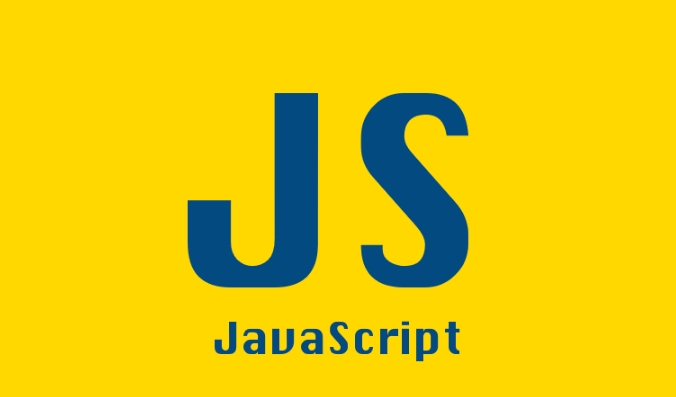There are three main methods to merge objects in JavaScript: 1. Use the Spread Operator to expand the properties of one object into another object, which is concise in syntax and suitable for most cases; 2. Use the Object.assign() method to achieve better compatibility merging, suitable for old browser projects; 3. When deep merging nested objects, you can use Lodash's _.merge() or custom recursive logic. It should be noted that the first two methods are shallow merges, duplicate attributes will be overwritten, and nested structures will not be processed, and the original data will not be retained by default.

Merging two objects is a common operation in JavaScript, especially when processing data, configuration, or state management. You just need to use the right method to complete the merge quickly.

Use the Spread Operator
This is the easiest and most common way to do it. You can use ... to "expand" the properties of one object into another:
const obj1 = { a: 1, b: 2 };
const obj2 = { b: 3, c: 4 };
const merged = { ...obj1, ...obj2 };
console.log(merged); // { a: 1, b: 3, c: 4 } It should be noted that if there are duplicate attribute names, the following ones will overwrite the previous ones . For example, the b attribute in the above example is ultimately the value of obj2 .

This method is suitable for most situations, especially when you don't want to change the original object.
Use Object.assign()
Object.assign() is an older but still widely supported method:

const obj1 = { a: 1, b: 2 };
const obj2 = { b: 3, c: 4 };
const merged = Object.assign({}, obj1, obj2);
console.log(merged); // { a: 1, b: 3, c: 4 }- The first parameter is the target object. Generally, passing an empty object
{}avoids modifying the original object. - The subsequent parameters are the objects to be merged.
- Like the expand operator, the properties of the following object will override the previous one.
The advantage of this method is that it has good compatibility and is suitable for projects that need to support old browsers.
Problems with deep copy and nested objects
Both methods above are shallow merging . If you have nested objects in your object, they will not be deeply copied:
const obj1 = { a: { x: 1 } };
const obj2 = { a: { y: 2 } };
const merged = { ...obj1, ...obj2 };
console.log(merged); // { a: { y: 2 } }, the original ax was replaced by the entire If you want to do deep merge, you have to use third-party libraries such as Lodash's _.merge() , or write recursive logic yourself. Otherwise, the default method does not handle nested structures.
Summarize how to choose
- If you don't need to be compatible with old browsers:
- ? Priority is given to the use of expansion operators, the code is concise and intuitive.
- If you need compatibility better:
- ? Use
Object.assign()
- ? Use
- If there is a nested structure in the object and you want to preserve or merge internal properties:
- ? Consider using Lodash's
mergeor implementing deep merge logic yourself
- ? Consider using Lodash's
Basically these are the methods. Although it doesn't seem complicated, it will cover the data you originally wanted to retain if you are not careful, so pay attention to the order and structure when using it.
The above is the detailed content of How to merge two objects in JavaScript?. For more information, please follow other related articles on the PHP Chinese website!

Hot AI Tools

Undress AI Tool
Undress images for free

Undresser.AI Undress
AI-powered app for creating realistic nude photos

AI Clothes Remover
Online AI tool for removing clothes from photos.

Clothoff.io
AI clothes remover

Video Face Swap
Swap faces in any video effortlessly with our completely free AI face swap tool!

Hot Article

Hot Tools

Notepad++7.3.1
Easy-to-use and free code editor

SublimeText3 Chinese version
Chinese version, very easy to use

Zend Studio 13.0.1
Powerful PHP integrated development environment

Dreamweaver CS6
Visual web development tools

SublimeText3 Mac version
God-level code editing software (SublimeText3)

Hot Topics
 Java vs. JavaScript: Clearing Up the Confusion
Jun 20, 2025 am 12:27 AM
Java vs. JavaScript: Clearing Up the Confusion
Jun 20, 2025 am 12:27 AM
Java and JavaScript are different programming languages, each suitable for different application scenarios. Java is used for large enterprise and mobile application development, while JavaScript is mainly used for web page development.
 Javascript Comments: short explanation
Jun 19, 2025 am 12:40 AM
Javascript Comments: short explanation
Jun 19, 2025 am 12:40 AM
JavaScriptcommentsareessentialformaintaining,reading,andguidingcodeexecution.1)Single-linecommentsareusedforquickexplanations.2)Multi-linecommentsexplaincomplexlogicorprovidedetaileddocumentation.3)Inlinecommentsclarifyspecificpartsofcode.Bestpractic
 How to work with dates and times in js?
Jul 01, 2025 am 01:27 AM
How to work with dates and times in js?
Jul 01, 2025 am 01:27 AM
The following points should be noted when processing dates and time in JavaScript: 1. There are many ways to create Date objects. It is recommended to use ISO format strings to ensure compatibility; 2. Get and set time information can be obtained and set methods, and note that the month starts from 0; 3. Manually formatting dates requires strings, and third-party libraries can also be used; 4. It is recommended to use libraries that support time zones, such as Luxon. Mastering these key points can effectively avoid common mistakes.
 JavaScript vs. Java: A Comprehensive Comparison for Developers
Jun 20, 2025 am 12:21 AM
JavaScript vs. Java: A Comprehensive Comparison for Developers
Jun 20, 2025 am 12:21 AM
JavaScriptispreferredforwebdevelopment,whileJavaisbetterforlarge-scalebackendsystemsandAndroidapps.1)JavaScriptexcelsincreatinginteractivewebexperienceswithitsdynamicnatureandDOMmanipulation.2)Javaoffersstrongtypingandobject-orientedfeatures,idealfor
 Why should you place tags at the bottom of the ?
Jul 02, 2025 am 01:22 AM
Why should you place tags at the bottom of the ?
Jul 02, 2025 am 01:22 AM
PlacingtagsatthebottomofablogpostorwebpageservespracticalpurposesforSEO,userexperience,anddesign.1.IthelpswithSEObyallowingsearchenginestoaccesskeyword-relevanttagswithoutclutteringthemaincontent.2.Itimprovesuserexperiencebykeepingthefocusonthearticl
 JavaScript: Exploring Data Types for Efficient Coding
Jun 20, 2025 am 12:46 AM
JavaScript: Exploring Data Types for Efficient Coding
Jun 20, 2025 am 12:46 AM
JavaScripthassevenfundamentaldatatypes:number,string,boolean,undefined,null,object,andsymbol.1)Numbersuseadouble-precisionformat,usefulforwidevaluerangesbutbecautiouswithfloating-pointarithmetic.2)Stringsareimmutable,useefficientconcatenationmethodsf
 What is event bubbling and capturing in the DOM?
Jul 02, 2025 am 01:19 AM
What is event bubbling and capturing in the DOM?
Jul 02, 2025 am 01:19 AM
Event capture and bubble are two stages of event propagation in DOM. Capture is from the top layer to the target element, and bubble is from the target element to the top layer. 1. Event capture is implemented by setting the useCapture parameter of addEventListener to true; 2. Event bubble is the default behavior, useCapture is set to false or omitted; 3. Event propagation can be used to prevent event propagation; 4. Event bubbling supports event delegation to improve dynamic content processing efficiency; 5. Capture can be used to intercept events in advance, such as logging or error processing. Understanding these two phases helps to accurately control the timing and how JavaScript responds to user operations.
 What's the Difference Between Java and JavaScript?
Jun 17, 2025 am 09:17 AM
What's the Difference Between Java and JavaScript?
Jun 17, 2025 am 09:17 AM
Java and JavaScript are different programming languages. 1.Java is a statically typed and compiled language, suitable for enterprise applications and large systems. 2. JavaScript is a dynamic type and interpreted language, mainly used for web interaction and front-end development.






